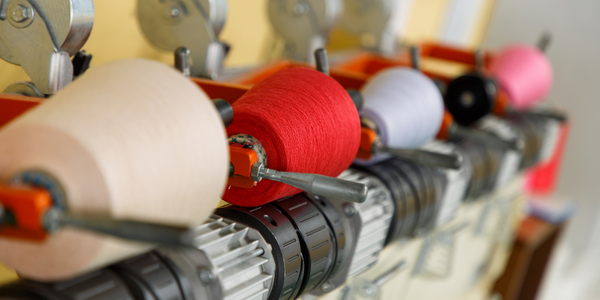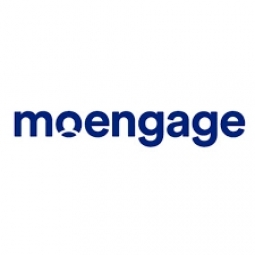技术
- 网络与连接 - 网关
- 平台即服务 (PaaS) - 应用开发平台
适用行业
- 服装
- 电子商务
适用功能
- 采购
用例
- 时间敏感网络
- 资产跟踪
关于客户
Shopo 是印度领先的电子商务平台之一 Snapdeal 的开放式 C2C 市场。它允许用户购买和销售各种产品,包括服装、鞋类、配饰和家居产品,所有这些都可以在应用程序上友好的聊天界面中进行。该平台旨在吸引卖家和买家,为他们提供独特且用户友好的市场体验。该应用程序的用户是希望销售其产品或希望购买各种类别商品的个人。
挑战
Shopo 是 Snapdeal 旗下的开放式 C2C 市场,在吸引卖家和买家使用其应用程序方面面临着独特的挑战。该公司需要让用户熟悉新的市场平台,并帮助他们完成设置商店、启用支付网关以及购买或销售商品等任务。 80-90% 的应用程序在使用一次后就会被删除,这一事实使这一挑战变得更加复杂。如果用户不了解如何使用应用程序,他们就不会使用它。 Shopo 需要确保用户在使用一次应用程序后不会删除该应用程序,而要实现这一目标,成功的入门是关键。这意味着帮助用户了解方向,教他们如何完成关键任务,并让他们想要回来获得更多。
解决方案
为了应对这一挑战,Shopo 采用了一种独特的“永远在线”方法,定期向用户发送相关推送,让他们能够适应应用程序。这种方法旨在让用户以一种轻松的方式逐步熟悉该应用程序。通知之间完美的时间间隔也意味着用户有理由在更长的时间内(一周)打开并使用该应用程序;大多数人放弃该应用程序的同一时期。 Shopo 还持续采用基于关键用户“事件”的智能触发推送,以便用户始终与应用程序互动。这些智能触发器有助于跟踪应用程序上的用户“事件”,并帮助他们从上次中断的地方继续。
运营影响

Case Study missing?
Start adding your own!
Register with your work email and create a new case study profile for your business.
相关案例.

Case Study
Fire Alarm System and Remote Monitoring Sytem
Fire alarm systems are essential in providing an early warning in the event of fire. They help to save lives and protect property whilst also fulfilling the needs of insurance companies and government departments.Fire alarm systems typically consist of several inter-linked components, such as smoke detectors, heat detector, carbon monoxide, manual call points, sounders, alarm and buzzer. The fire alarm system should give immediate information in order to prevent the fire spread and protect live and property.To get maximum protection a shoe manufacturer in Indonesia opted for a new fire alarm system to monitor 13 production sites spread over 160 hectars. Although the company had an existing fire alarm system, it could not be monitored remotely.It was essential that the new system would be able to be monitored from a central control room. It needed to be able to connect to the existing smoke detector and manual call point. Information should be easily collected and passed on to the Supervisory Control and Data Acquisition (SCADA) system. Furthermore, the system should have several features such as alarm management, auto reporting, being connected to many client computers without additional cost, and run 24/7 without fails. The company also needed a system which could be implemented without changing the architecture of the existing fire alarm system.

Case Study
IoT Applications and Upgrades in Textile Plant
At any given time, the textile company’s manufacturing facility has up to 2,000 textile carts in use. These carts are pushed from room to room, carrying materials or semi-finished products. Previously, a paper with a hand-written description was attached to each cart. This traditional method of processing made product tracking extremely difficult. Additionally, making sure that every cart of materials or semi-finished products went to its correct processing work station was also a problem. Therefore, the company desired an intelligent solution for tracking assets at their factories. They also wanted a solution that would help them collect process data so they could improve their manufacturing efficiency.

Case Study
Retailer Uses RFID Scanner to Improve Efficiency
Patrizia Pepe wished to improve the logistics of their warehouse: accepting incoming goods from their production sites, movement of items throughout
the warehouse, and packaging of goods for distribution to the retail locations. They initially tried to use barcodes for this function. Because barcodes must be individually scanned within a line-of-sight, the acceptance of goods coming into the warehouse was too time consuming. Working with the University of Florence, Patrizia Pepe instituted a five-month pilot project beginning in August of 2009 to test the validity of an RFID solution. The pilot involved tagging of about 60,000 items for the second seasonal collection, and convinced the company to move forward with tagging all items.

Case Study
Monitoring and Controlling Automatic Mixing and Dispensing Machines
As technology advances, textile manufacturing has been transformed from a labor-intensive to a partially or fully automated industry. Automation is significant in all segments of textile production - from spinning to printing, and textile machinery manufacturers are constantly searching for new technologies and automation processes will increase the productivity of their machines. The color paste mixing and dispensing machine is an essential part of the printing and dyeing process. With the advantage of automatically computerized controls and database management, the system can significantly improve its dispensing precision, working efficiency and production quality as well as reducing material consumption.

Case Study
Digital Transformation of Atlanta Grout & Tile: An IoT Case Study
Atlanta Grout & Tile, a Tile, Stone & Grout restoration company based in Woodstock, Georgia, was facing challenges with its traditional business model. Despite steady growth over the years, the company was falling behind the web revolution and missing out on the opportunity to tap into a new consumer base. They were using independent software from different vendors for each of their department information and workforce management. This resulted in a lot of manual work on excel and the need to export/import data between different systems. This not only increased overhead costs but also slowed down their response to clients. The company also had to prepare numerous reports manually and lacked access to customer trends for effective business decision-making.








